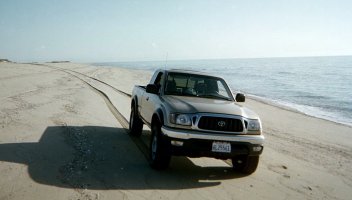Don't turtles and other creatures nest pretty high up on the berm?
I'm curious because it seems like vehicle traffic of any kind would be pretty much confined to the transition from the backbone access road to the low-tide hardpack.
I know the few times I've driven on the beach I wasn't exactly anxious to crawl along forever in the soft stuff.
You want to get down on the hard stuff, quick.

What's the scoop on that?






